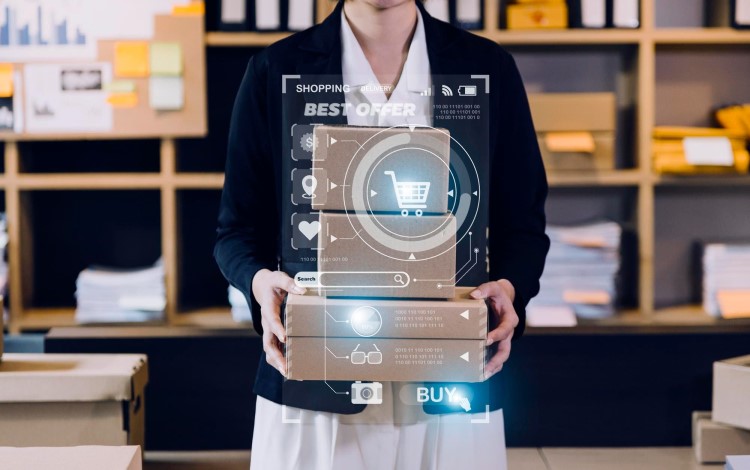
Enhancing customer experience in retail is more crucial than ever. Retailers are continuously seeking innovative ways to attract and retain customers. They do this by providing a superior shopping experience that stands out from the competition. This involves leveraging technology, personalizing interactions, optimizing every touchpoint, and rewarding loyalty. Below we’ll list various strategies retailers can employ to improve customer experience. Strategies such as integrating advanced technologies like AI and AR, refining loyalty programs, etc. Understanding and implementing these tactics can transform casual shoppers into loyal customers, fostering long-term relationships and driving business success.
Personalization Strategies
Enhancing customer experience in retail hinges significantly on effective personalization strategies. By leveraging data analytics, retailers can gain deep insights into customer preferences and shopping behaviors. This understanding allows businesses to tailor their marketing efforts, product recommendations, and promotions. These are necessary to meet the unique needs of each shopper, whether online or in-store.
Furthermore, data-driven personalization extends beyond mere product suggestions. It encompasses customized shopping experiences that resonate on a personal level with consumers. For instance, an online retailer can use browsing history and purchase data to craft personalized email campaigns. They can then offer deals on preferred products or suggesting new arrivals that align with past purchases.
Additionally, in physical stores, sales associates equipped with real-time data can provide personalized shopping assistance. They can suggest products that fit the customer’s style or previous purchases. This level of service not only enhances the shopping experience but also significantly boosts customer satisfaction and loyalty.
By effectively utilizing data analytics, retailers can transform a standard shopping trip into a bespoke journey, making every interaction meaningful. This strategic approach not only captivates customers but also drives increased sales and fosters long-term customer relationships.
Technology Integration
Technology integration plays a crucial role in enhancing customer experience in retail. This can be done through the adoption of augmented reality (AR), virtual reality (VR), and mobile apps. AR and VR, for instance, offer immersive experiences that allow customers to visualize products in a real-world context. They also allow customers to explore a digital showroom from the comfort of their home. This not only makes the shopping experience more engaging but also helps customers make informed purchasing decisions.
Moreover, mobile apps are transforming the way consumers interact with brands. These apps can provide personalized shopping guides, product information, and special offers based on the user’s location within a store or browsing history online. Additionally, they facilitate easier checkouts and instant customer service, smoothing the path to purchase and enhancing overall satisfaction.
Furthermore, these technologies collectively contribute to a more dynamic and interactive shopping environment. By integrating AR, VR, and mobile capabilities, retailers can create unique and memorable shopping experiences. This can attract new customers and retain existing ones. The strategic use of technology not only drives sales but also sets a retailer apart from competitors.
Omnichannel Approaches
An omnichannel approach is vital for enhancing customer experience in retail by ensuring consistency across all platforms. Whether a customer shops online, through a mobile app, or in a physical store, the experience should be seamless. This consistency helps build trust and reinforces brand loyalty. Customers enjoy a predictable and reliable interaction regardless of the channel they choose.
To integrate these touchpoints effectively, retailers must leverage technology to synchronize data across all platforms. For example, inventory levels should be updated in real-time, so customers can accurately check product availability online before visiting a store. Additionally, customer service interactions should be trackable across channels, allowing representatives to provide personalized and informed support based on the customer’s history and preferences.
Moreover, a successful omnichannel strategy involves understanding the unique advantages of each channel and using them to complement one another. In-store experiences can be enriched with digital tools like interactive kiosks or AR applications that enhance product visualization. Simultaneously, online platforms can offer exclusive products or special promotions not available elsewhere.
By thoughtfully linking these diverse channels, retailers can create a comprehensive and engaging shopping journey that meets modern consumers’ expectations for efficiency, convenience, and personalization. This approach not only satisfies current customers but also attracts new ones, fostering growth and sustainability in the competitive retail landscape.
Customer Service Innovations
Enhancing customer experience in retail is increasingly influenced by innovations in customer service technology. One of the most transformative trends is the integration of chatbots and AI-driven support systems. These tools can handle a vast range of customer inquiries automatically, from tracking orders to resolving common issues, ensuring that consumers receive immediate responses at any time of the day. This not only boosts efficiency but also significantly enhances customer satisfaction by reducing wait times and streamlining support.
Moreover, AI systems are being tailored to provide personalized customer interactions. They analyze customer data to offer solutions and recommendations that are specific to individual needs, thereby mimicking the thoughtful attention traditionally associated with in-person service. This level of personalization helps in building strong customer relationships and loyalty.
Additionally, while technology plays a crucial role, the human element remains essential. Enhanced training for staff is critical to ensure they can effectively use these technologies and provide a human touch when needed. Staff training now often includes modules on managing AI tools and interpreting their outputs to provide thoughtful and empathetic customer service.
By combining advanced technology with skilled human service, retailers can offer a customer service experience that is not only efficient but also genuinely engaging and responsive. This comprehensive approach is key to retaining customers and enhancing their shopping experience in today’s competitive retail environment.
Loyalty Programs and Rewards
Well-designed loyalty programs and rewards systems are instrumental in enhancing customer experience in retail by incentivizing repeat business and fostering deeper relationships. Such programs are tailored to recognize and reward the loyalty of returning customers, making them feel valued and appreciated. By offering points, discounts, or exclusive benefits for frequent purchases, retailers can significantly increase customer retention rates.
Moreover, these programs often include tiers that encourage customers to increase their spending to reach higher reward levels. This not only drives sales but also personalizes the shopping experience, as customers receive rewards that are aligned with their buying habits. Additionally, data gathered from these interactions can help retailers fine-tune their offerings and promotions to better match customer preferences, further personalizing the shopping experience.
Furthermore, incorporating elements of gamification into loyalty programs, such as challenges or badges, can enhance engagement by making the shopping process more enjoyable and interactive. This strategy not only maintains the customer’s interest but also strengthens the emotional connection with the brand.
By effectively utilizing loyalty programs and rewards, retailers can create a compelling reason for customers to return, transforming occasional shoppers into loyal fans. This strategy not only boosts the bottom line but also builds a community of dedicated customers who are likely to advocate for the brand, thereby expanding its reach and influence.
Conclusion
In conclusion, enhancing customer experience in retail involves a multi-faceted approach that integrates personalization strategies, cutting-edge technology, seamless omnichannel experiences, innovative customer service, and dynamic loyalty programs. Each component plays a crucial role in not only meeting but exceeding customer expectations, fostering loyalty, and driving business growth. As retail continues to evolve, embracing these trends and innovations will be key to staying competitive and relevant in the market. Retailers who invest in understanding and implementing these approaches will likely see increased customer satisfaction, stronger relationships, and ultimately, sustained success in the ever-changing landscape of retail.


